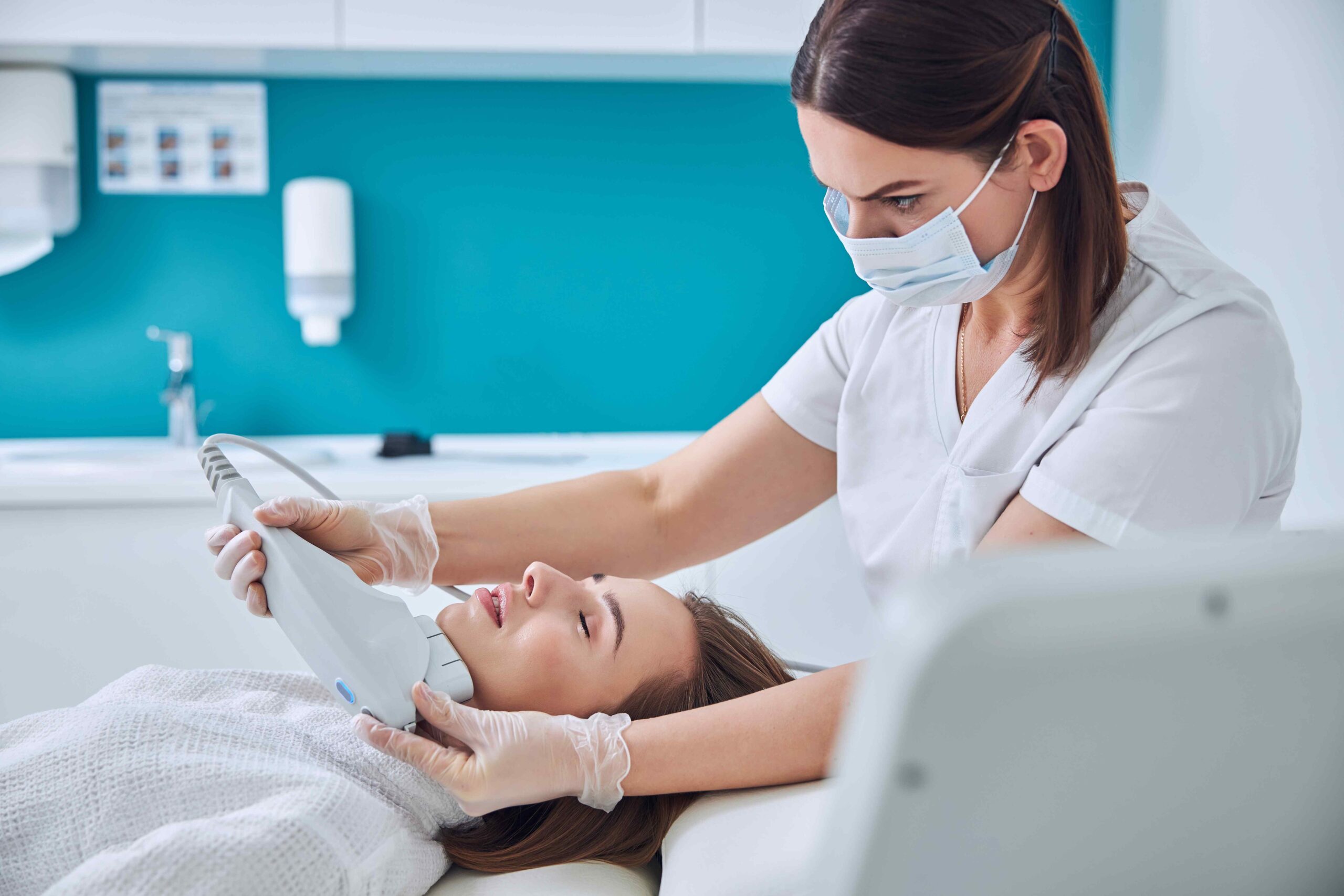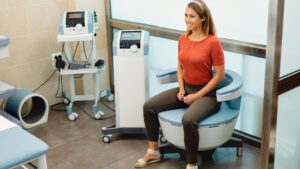Understanding Body Contouring
When it comes to achieving your desired body shape and proportions, body contouring procedures can be a valuable option. Understanding what body contouring is and the science behind it can help you make informed decisions about your personal aesthetic goals.
What is Body Contouring?
Body contouring refers to a set of cosmetic procedures designed to sculpt and reshape the body by targeting specific areas of concern. These procedures aim to eliminate excess fat, tighten sagging skin, and enhance overall body contours. Body contouring can be performed on various areas, including the abdomen, thighs, arms, buttocks, and more.
It’s important to note that body contouring is not a weight loss solution or a substitute for a healthy lifestyle. Instead, it is a way to enhance and refine your body shape by addressing stubborn areas of fat or loose skin that may be resistant to diet and exercise.
The Science Behind Body Contouring
Body contouring procedures utilize various techniques to achieve their desired outcomes. These techniques may include liposuction, coolsculpting, radiofrequency, ultrasound, and laser-assisted lipolysis. Each technique works differently but with the common goal of improving body contours.
Liposuction is a surgical procedure that involves the removal of excess fat deposits through small incisions. It is typically used to target areas with stubborn fat that are resistant to diet and exercise.
CoolSculpting, on the other hand, is a non-invasive technique that uses controlled cooling to freeze and destroy fat cells. This process is known as cryolipolysis and can be effective in reducing fat pockets in specific areas.
Radiofrequency and ultrasound treatments use heat energy to target fat cells and stimulate collagen production, resulting in skin tightening and body contouring effects. These non-invasive or minimally invasive procedures are often well-tolerated and require little to no downtime.
Laser-assisted lipolysis involves the use of laser energy to liquefy fat cells before they are removed through suction or absorbed by the body. This technique can provide precise targeting and may also stimulate collagen production for skin tightening.
It’s important to consult with a medical professional to determine which body contouring technique is best suited for your individual needs and goals. They will evaluate your specific concerns, medical history, and desired outcomes to recommend the most appropriate approach.
Understanding the basics of body contouring and its underlying science can help you make an informed decision about pursuing these procedures. It’s always recommended to consult with a qualified medical professional who specializes in body contouring to ensure the best possible results.
Different Body Contouring Techniques
Body contouring offers various techniques to help individuals achieve their desired body shape and proportions. Each technique has its own unique approach and benefits. Let’s explore four popular body contouring techniques: liposuction, CoolSculpting, radiofrequency and ultrasound, and laser-assisted lipolysis.
Liposuction
Liposuction is a surgical procedure that aims to remove excess fat deposits from specific areas of the body. During the procedure, a small incision is made, and a thin tube called a cannula is inserted to suction out the fat. Liposuction can be performed on various body areas, including the abdomen, thighs, buttocks, and arms.
Liposuction can effectively target stubborn fat pockets that are resistant to diet and exercise. It is important to note that liposuction is not a weight loss solution, but rather a method to sculpt and contour the body. The procedure is typically performed under general anesthesia or local anesthesia with sedation. Recovery time varies depending on the extent of the procedure and individual healing.
CoolSculpting
CoolSculpting, also known as cryolipolysis, is a non-invasive body contouring technique. It uses controlled cooling to freeze and eliminate fat cells without damaging the surrounding tissues. The targeted fat cells are gradually eliminated by the body’s natural metabolic processes over a period of several weeks.
CoolSculpting is an FDA-approved procedure that is commonly used to reduce fat in areas such as the abdomen, flanks, thighs, and double chin. The treatment is typically painless, and there is minimal to no downtime required. Multiple sessions may be needed to achieve the desired results. It’s important to consult with a medical professional to determine if CoolSculpting is suitable for your specific needs.
Radiofrequency and Ultrasound
Radiofrequency (RF) and ultrasound body contouring techniques use energy-based devices to target and heat the underlying fat cells. The heat generated stimulates collagen production and triggers the natural breakdown of fat cells, leading to a more contoured appearance.
RF and ultrasound treatments are non-invasive and can be used on various areas of the body, including the abdomen, thighs, arms, and buttocks. These techniques are typically comfortable and require no downtime. Multiple treatment sessions may be necessary to achieve optimal results. Consulting with a medical professional will help determine the most suitable treatment plan for your body contouring goals.
Laser-Assisted Lipolysis
Laser-assisted lipolysis, often referred to as laser liposuction or laser lipo, is a minimally invasive technique that uses laser energy to liquefy fat cells before they are removed from the body. The laser energy is delivered through a small tube called a cannula, which is inserted into the targeted area.
Laser-assisted lipolysis can be performed on various body areas, including the abdomen, thighs, hips, and arms. The procedure offers the advantage of potentially stimulating collagen production, which can help tighten the skin in the treated area. Recovery time is typically shorter compared to traditional liposuction.
It’s important to note that these body contouring techniques have different considerations, benefits, and potential risks. Consulting with a medical professional specializing in body contouring will help determine the most appropriate technique for your individual needs and goals.
Benefits of Body Contouring
Body contouring procedures offer numerous benefits for individuals looking to enhance their physical appearance. From achieving a more proportionate body shape to boosting confidence and self-esteem, body contouring can have a positive impact on both physical and emotional well-being. Let’s explore some of the key benefits of body contouring:
Enhanced Body Shape and Proportions
One of the primary benefits of body contouring is the ability to achieve a more sculpted and defined body shape. These procedures target specific areas of the body where excess fat or loose skin may be present. Whether it’s stubborn fat pockets in the abdomen, thighs, arms, or other areas, body contouring techniques such as liposuction or CoolSculpting can help eliminate these concerns.
By removing or reducing fat deposits and tightening the skin, body contouring procedures can create a more balanced and proportionate appearance. This can lead to improved body contours and a more aesthetically pleasing physique.
Improved Confidence and Self-esteem
Body image plays a significant role in self-confidence and overall well-being. Many individuals may feel self-conscious about certain areas of their body, which can affect their self-esteem. Body contouring procedures can help address these concerns and enhance body confidence.
By achieving the desired body shape and proportions, individuals often experience a boost in self-confidence. They feel more comfortable and satisfied with their physical appearance, which can positively impact various aspects of their lives.
Non-invasive or Minimally Invasive Procedures
Advancements in medical technology have led to the development of non-invasive or minimally invasive body contouring procedures. These techniques offer an alternative to traditional surgical methods, reducing the need for extensive incisions and minimizing downtime.
Procedures like radiofrequency and ultrasound treatments utilize heat or sound waves to target fat cells, breaking them down without the need for surgery. Laser-assisted lipolysis is another minimally invasive technique that uses laser energy to liquefy fat cells, making them easier to remove.
Long-lasting Results
Another significant benefit of body contouring is the potential for long-lasting results. Unlike temporary solutions such as dieting or exercise, which may only provide temporary changes, body contouring procedures can offer more permanent outcomes.
While it’s essential to maintain a healthy lifestyle with proper nutrition and exercise to preserve results, body contouring can help eliminate stubborn fat deposits that are resistant to diet and exercise alone. This allows individuals to enjoy the benefits of their refined body contours for an extended period.
Body contouring procedures offer transformative results for individuals seeking to improve their body shape and boost their confidence. Whether through traditional techniques like liposuction or innovative approaches like CoolSculpting and radiofrequency treatments, these procedures provide a means to achieve the desired body contours. It’s important to consult with a reputable medical professional to determine the most suitable body contouring options based on individual goals and candidacy.
Is Body Contouring Right for You?
If you’re considering body contouring as a way to enhance your natural beauty, it’s important to determine whether it’s the right choice for you. Body contouring procedures can help sculpt and shape your body, but not everyone is a suitable candidate. In this section, we will explore the factors to consider and the importance of consulting with a medical professional before choosing body contouring.
Candidacy for Body Contouring
Before undergoing any body contouring procedure, it’s essential to evaluate whether you are a suitable candidate. The ideal candidate for body contouring is generally someone who:
- Has achieved a stable weight: Body contouring is not a weight loss solution. It is best suited for individuals who have already reached their target weight through methods such as weight loss and a healthy lifestyle.
- Has good overall health: Good general health is crucial to ensure a safe and successful body contouring procedure. Your medical history, including any underlying medical conditions, will be taken into consideration.
- Has realistic expectations: It’s important to have realistic expectations about the results of body contouring. While it can enhance your body shape and proportions, it’s important to understand the limitations and potential outcomes.
Considerations Before Choosing Body Contouring
Before deciding on body contouring, there are several factors you should consider:
- Cost: Body contouring procedures can vary in cost depending on the technique and extent of treatment. It’s important to factor in the cost and determine if it aligns with your budget. Some procedures may also require multiple sessions, which can further impact the overall cost.
- Downtime and Recovery: Different body contouring techniques have varying levels of invasiveness and recovery periods. It’s crucial to consider the downtime associated with the procedure and whether you can allocate the necessary time for recovery.
- Potential Risks: Like any medical procedure, body contouring carries some risks. It’s important to be aware of the potential risks and complications associated with the specific procedure you are considering. Consulting with a medical professional will provide you with a comprehensive understanding of the risks involved.
Consulting with a Medical Professional
Before making a decision about body contouring, it is highly recommended to consult with a qualified medical professional who specializes in aesthetic procedures. A primary care physician or a medical professional with expertise in body contouring can assess your individual needs and determine the most suitable options for you.
During the consultation, you can discuss your goals, medical history, and any concerns you may have. The medical professional will evaluate your candidacy for body contouring and provide personalized recommendations based on your unique circumstances. They can also explain the different body contouring techniques available, such as emsculpt neo and emsella, and guide you toward the most appropriate choice.
Remember, the decision to undergo body contouring is a personal one. By consulting with a medical professional, you can make an informed decision based on your individual circumstances, ensuring that body contouring is the right path for you.
Safety and Risks
When considering body contouring procedures, it’s essential to be aware of the potential risks and complications involved. While body contouring techniques have advanced significantly, it’s important to understand that no medical procedure is entirely risk-free. In this section, we will explore the potential risks and complications associated with body contouring, as well as the safety measures, precautions, and recovery aftercare involved.
Potential Risks and Complications
Although body contouring procedures are generally considered safe, there are some potential risks and complications that individuals should be aware of. These can include:
- Infection: Any surgical procedure carries a risk of infection. Following proper post-operative care instructions and maintaining good hygiene can help reduce this risk significantly.
- Bleeding: Some degree of bleeding is normal during and immediately after body contouring procedures. However, excessive bleeding may occur in rare cases and may require medical attention.
- Scarring: Incisions made during surgical body contouring procedures may result in visible scars. The extent of scarring can vary depending on various factors, including individual healing ability and the technique used by the surgeon.
- Skin Irregularities: In some cases, contour irregularities or uneven skin texture may occur after body contouring procedures. These irregularities can often be corrected with subsequent treatments or revisions.
- Numbness or Sensation Changes: Temporary or permanent changes in skin sensation, such as numbness or increased sensitivity, may occur after body contouring procedures. These sensations usually subside over time but can persist in rare cases.
It’s important to discuss these risks and potential complications with a qualified medical professional who can provide personalized information and guidance based on your specific circumstances.
Safety Measures and Precautions
To ensure the safety and effectiveness of body contouring procedures, it’s crucial to take certain safety measures and precautions. These can include:
- Choosing a Qualified Provider: Selecting a board-certified plastic surgeon or a licensed medical professional experienced in body contouring procedures is essential. Research the credentials, expertise, and reputation of the provider before making a decision.
- Medical Evaluation: Prior to undergoing any body contouring procedure, a comprehensive medical evaluation should be conducted. This evaluation helps identify any underlying health conditions or factors that may increase the risks associated with the procedure.
- Clear Communication: Open and honest communication with your medical professional is vital. Discuss your expectations, concerns, and medical history thoroughly to ensure the best possible outcome.
- Follow Pre- and Post-operative Instructions: Adhering to the pre- and post-operative instructions provided by your medical professional is crucial for optimal results and minimizing the risk of complications. These instructions may include guidelines for medication, diet, activity level, and wound care.
Recovery and Aftercare
The recovery process following body contouring procedures will vary depending on the specific technique used and the extent of the treatment. It’s important to follow your medical professional’s instructions for a smooth and safe recovery. Some general considerations for recovery and aftercare may include:
- Rest and Healing Time: Give your body adequate time to heal and recover. This may involve avoiding strenuous activities, heavy lifting, or exercise for a specified period.
- Pain Management: Pain and discomfort are common after body contouring procedures. Your medical professional may prescribe pain medications or suggest over-the-counter pain relievers to manage any discomfort.
- Wound Care: Proper wound care is crucial to prevent infection and promote healing. Follow your medical professional’s instructions for cleaning and dressing the incision sites.
- Follow-up Appointments: Attend all scheduled follow-up appointments with your medical professional. These visits allow them to monitor your progress, address any concerns, and ensure a smooth recovery.
Remember, every individual’s experience with body contouring and recovery may differ. It’s important to consult with a qualified medical professional who can provide personalized advice and guidance based on your unique circumstances.







